10 Types of Marsupials
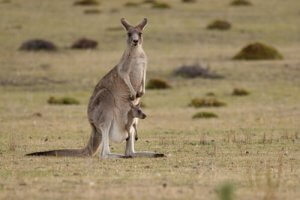
The head of a small kangaroo poking out of its mother’s pouch is a familiar image, but what’s behind it? What are the advantages of carrying the baby in a pouch? And how many types of marsupials are there?
Today we have the answers to these and more questions and you’ll be able to get to know different types of marsupials. Although it’s genetically older, this form of reproduction has points in its favor that have allowed many species to survive over the centuries.
Characteristics of marsupials
Marsupials are non-placental viviparous mammals. This means that the placenta, which protects the fetus, nourishes it and protects it from the mother’s immune system, doesn’t exist in these animals during pregnancy. Instead, they have a pouch, a bag of skin in the mother’s womb.
Female marsupials have 3 vaginas. The 2 lateral ones are destined for fertilization and the central one is where the young are born.
This means that the young are born very premature and climb up to the breasts through a path of saliva that the mother creates before birth. They’ll spend much of their development hooked to the mother’s nipples, as they’re in a fetal state.
The life of the offspring is at risk from birth due to this premature delivery, but, in this way, the mother avoids having to survive with an advanced pregnancy and having a problematic delivery. In fact, pregnancies rarely exceed a month.
Marsupial taxonomy
There are about 270 species of marsupials, 70 in America and about 200 in Australia. Phylogenetic studies suggest that marsupials managed to get from South America to Australia via Antarctica when Pangea still existed.
The mammalia class encompasses the marsupialia, to which the animals in question belong. Within this infraclass, the following orders can be found:
- Order Didelphimorph. This order groups the majority of American marsupials, such as the opossum. Many of them are considered living fossils.
- Order Paucituberculata. Also American, it only has living members in the Caenolestidae family, as the rest of the species are long extinct.
- Order Microbiotheria. The only member of this order is the mountain monkey (Dromiciops gliroides), which lives in the American Neotropics despite being more related to Australian marsupials.
- Dasyuromorphia Order. This order is endemic to the Australian continent. Most of its members are terrestrial and carnivorous, such as the Tasmanian devil (Sarcophilus harrisii).
- Order Peramelemorphia. Characterized by their thin legs and elongated snout, this order is made up of the bandicoots (Peramelidae) and the bilbies (Macrotis).
- Order Notoryctemorphia. The members of this order bear an incredible resemblance to placental moles, even though they’re genetically distant species.
- Diprotodontia order. Marsupials with two incisors in the jaw belong to this group. Here you can find the kangaroo, koala, or glider, well known in general culture.
Types of American marsupials
Phylogenetically older, American marsupials are less well known, although no less interesting for that. If you want to get to know them better, here are a few examples.
Water opossum (Chironectes minimus )
This is the only known aquatic marsupial. Its habitat is found in the lakes and streams of Mexico and its populations are distributed to the northeast of Argentina. It feeds on river crustaceans, amphibians, and fish. It can grow to about 75 centimeters (30 inches) from head to tail.
Four-eyed opossum (Philander opossum)
It lives in southern Mexico, although it’s also found in South America. It’s an omnivore, arboreal, and a terrestrial species of nocturnal habits. The opossum family is also known as “opossums” in its broadest sense.
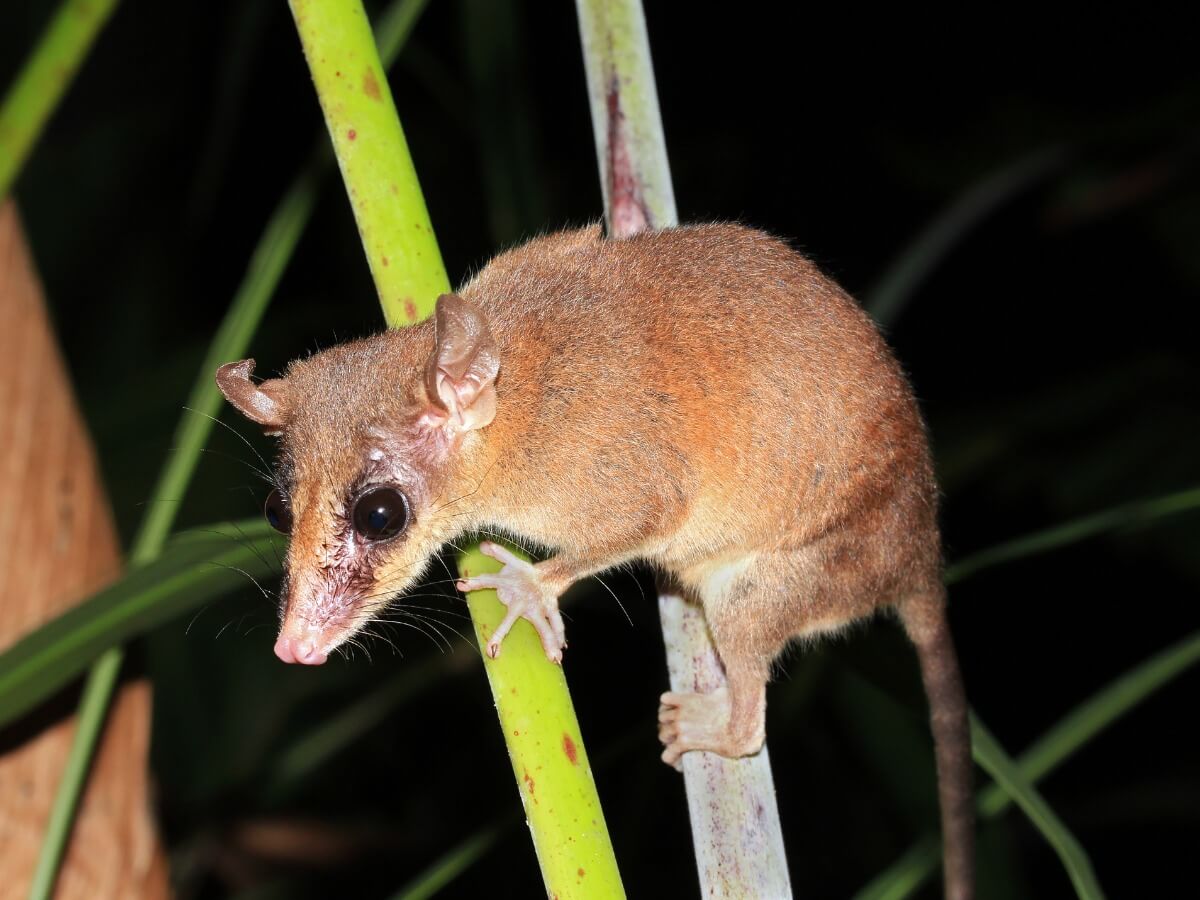
Colombian chuchita (Gracilinanus perijae)
Also known as the mouse opossum of Colombia, this species is endemic to the country that gives it its name. It’s a tiny animal that lives in tropical and subtropical lowland forests.
North American opossum (Didelphis virginiana)
This is perhaps the best-known representative, as the opportunistic eating habits of this opossum allowed it to spread to North America. It’s common to see specimens entering the cities and the courtyards of the houses.
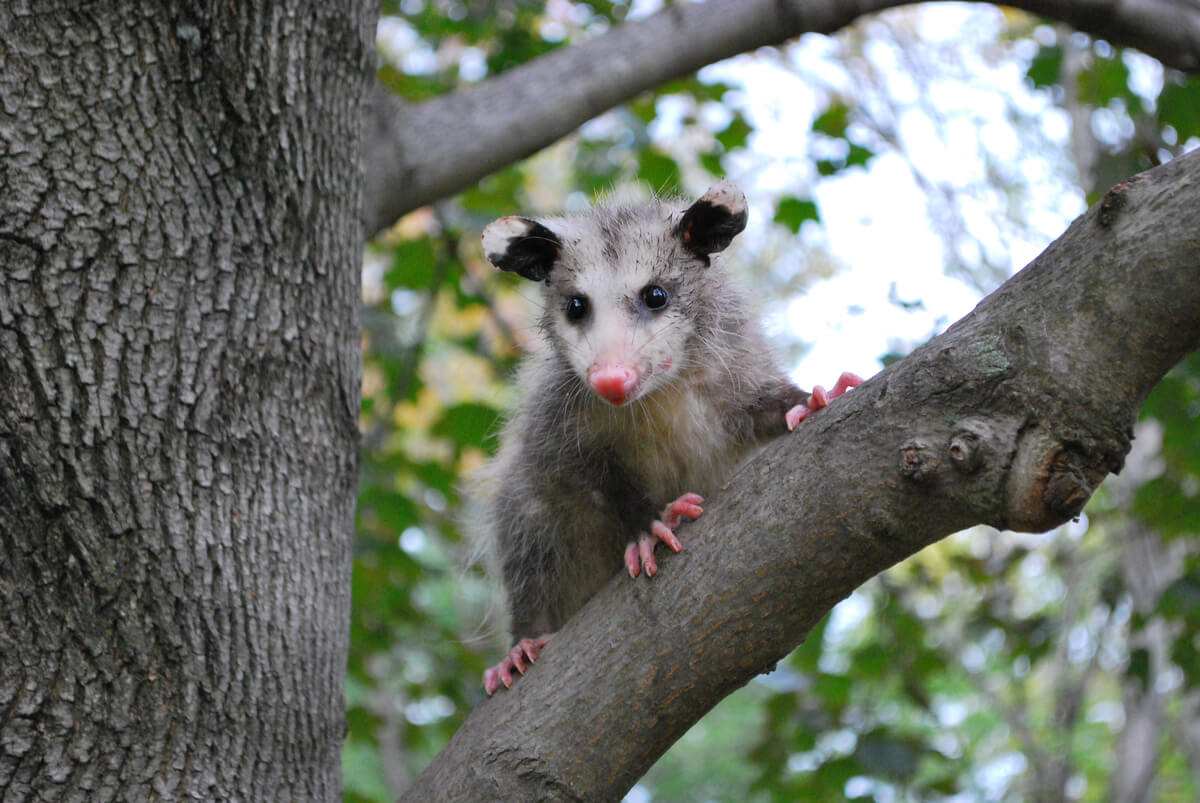
Colombian tunato (Caenolestes fuliginosus)
Endemic to the south of Valdivia (Antioquia), this small marsupial is nocturnal and omnivorous. It’s critically endangered by agriculture that destroys its habitat.
Sheep weasel (Didelphis albiventris)
The sheep weasel or black weasel is typical of Argentina, Bolivia, Brazil, Uruguay and Paraguay. Despite the nickname “weasel”, it isn’t a mustelid – it’s a marsupial. It has a very short life cycle, as it barely reaches 4 years of age. It’s an omnivorous species that feeds on insects, rodents, amphibians, reptiles, and fruits.
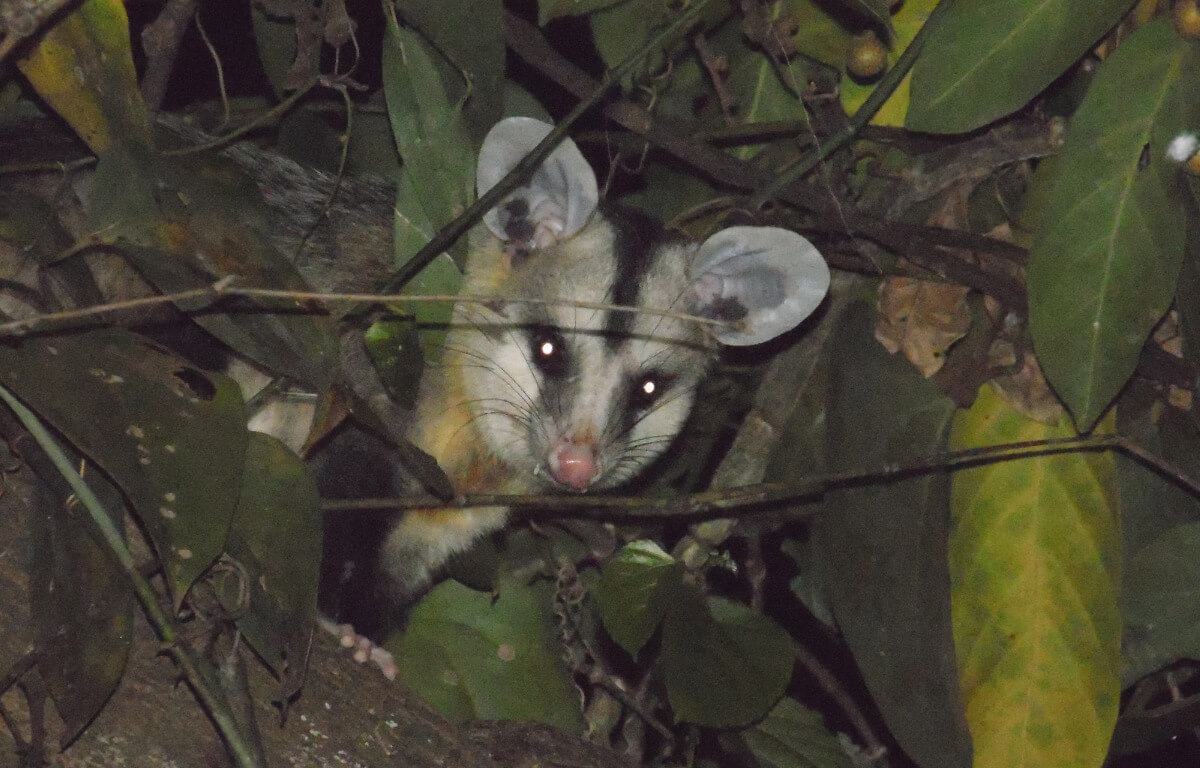
Types of Australian marsupials
This continent is where the greatest number of these animals are found: of the 378 land mammals registered there, 200 are marsupials. Australian marsupials are characterized by the great adaptive variability of their species, as you can see with the following examples.
Giant kangaroo (Macropus giganteus)
The giant kangaroo or eastern gray kangaroo can weigh more than 60 kilos (130 pounds) and reach 2 meters (6.6 feet) in height. Its powerful hind legs allow it to reach 55 kilometers/hour (just over 30 mph) in very fast sprints. It lives in the south and east of Australia and Tasmania.
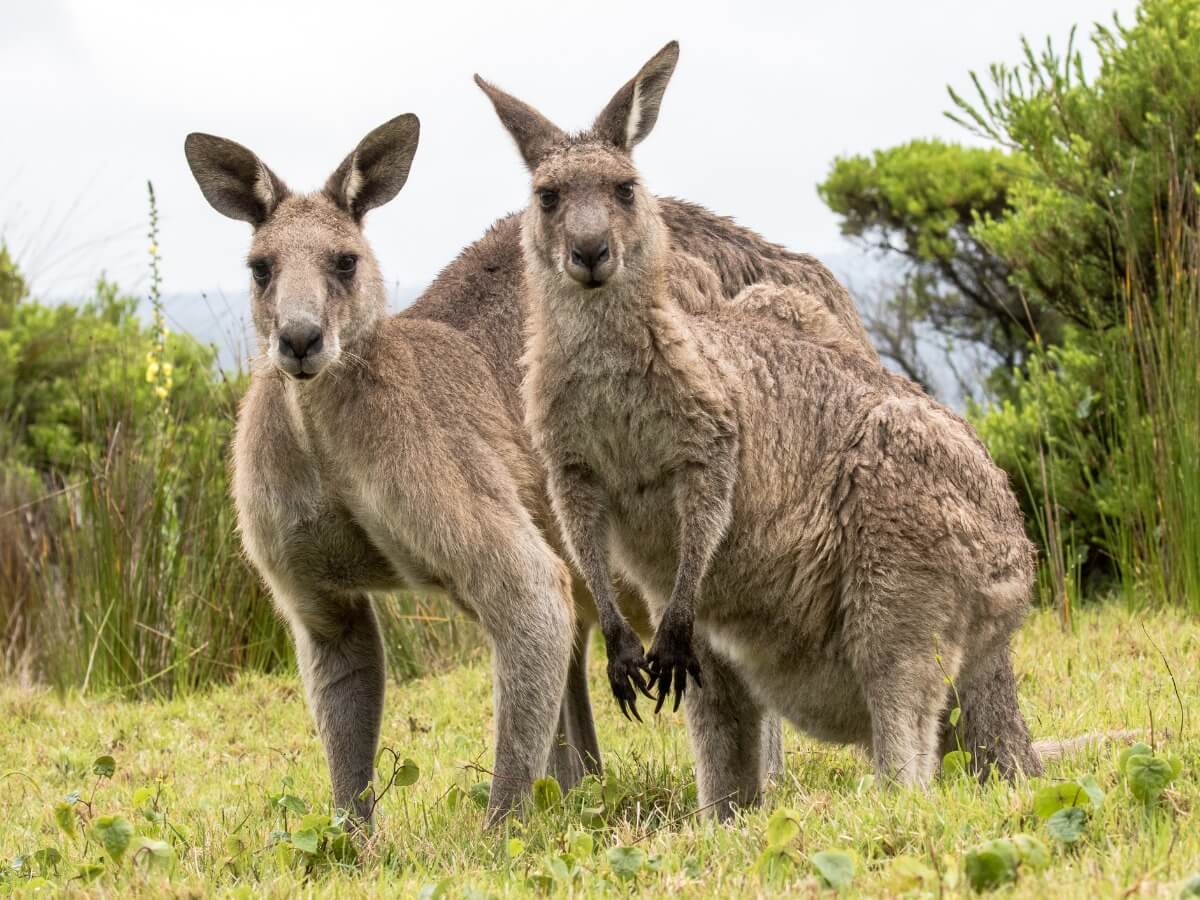
Common wombat (Vombatus ursinus)
This is the only species of its genus and is characterized by its herbivorous diet and opportunistic behavior. Although prohibited these days, its adorable looks caused this marsupial to be exploited as a domestic animal in the past. Their metabolism is extraordinarily slow and they tend to move calmly, although when in danger they can put a spring to their step!
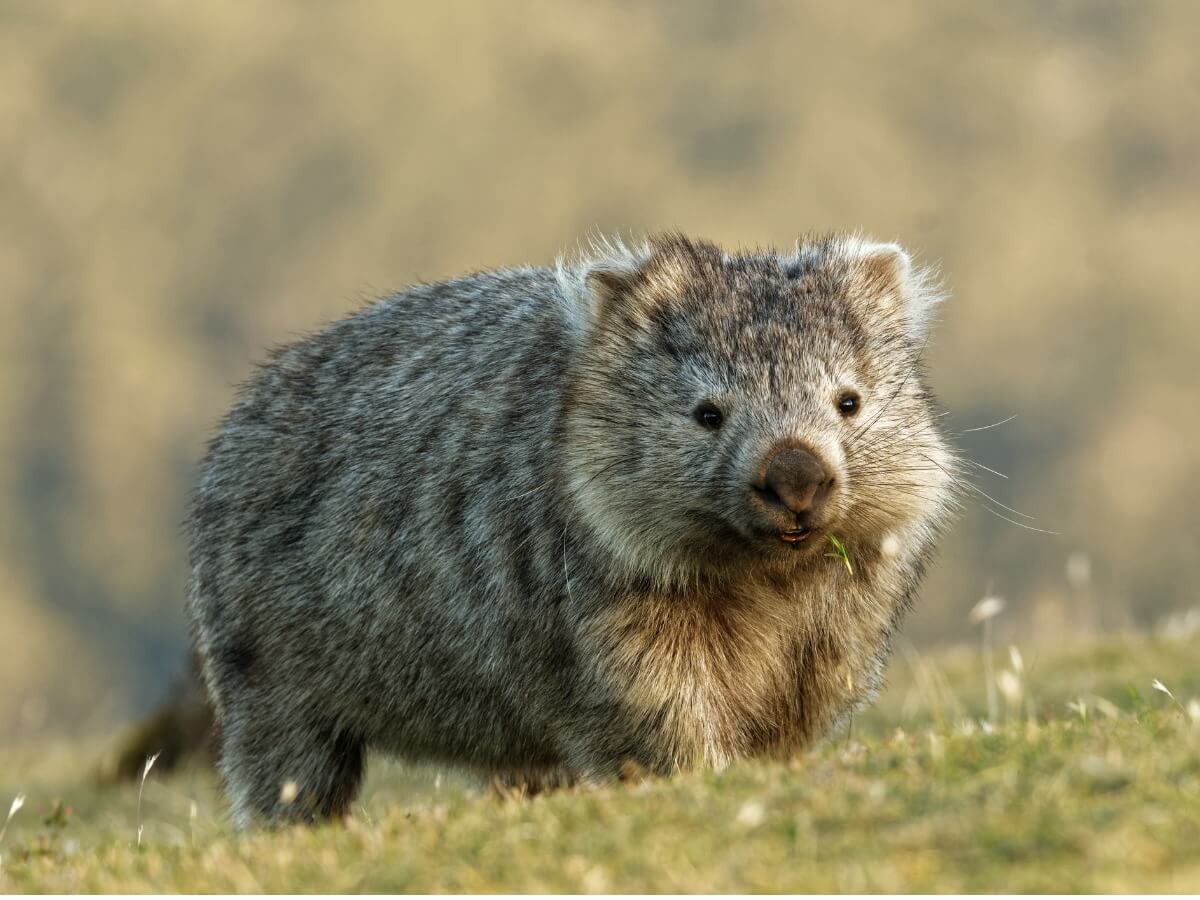
Swamp wallaby (Wallabia bicolor )
This genus differs from that of kangaroos, although their appearance is very similar. The female of this species harbors a particularity: she has 2 uteri, which allows her to start a new gestation period while still carrying a baby in her womb, that is, she could have one pregnancy at the same time as another.
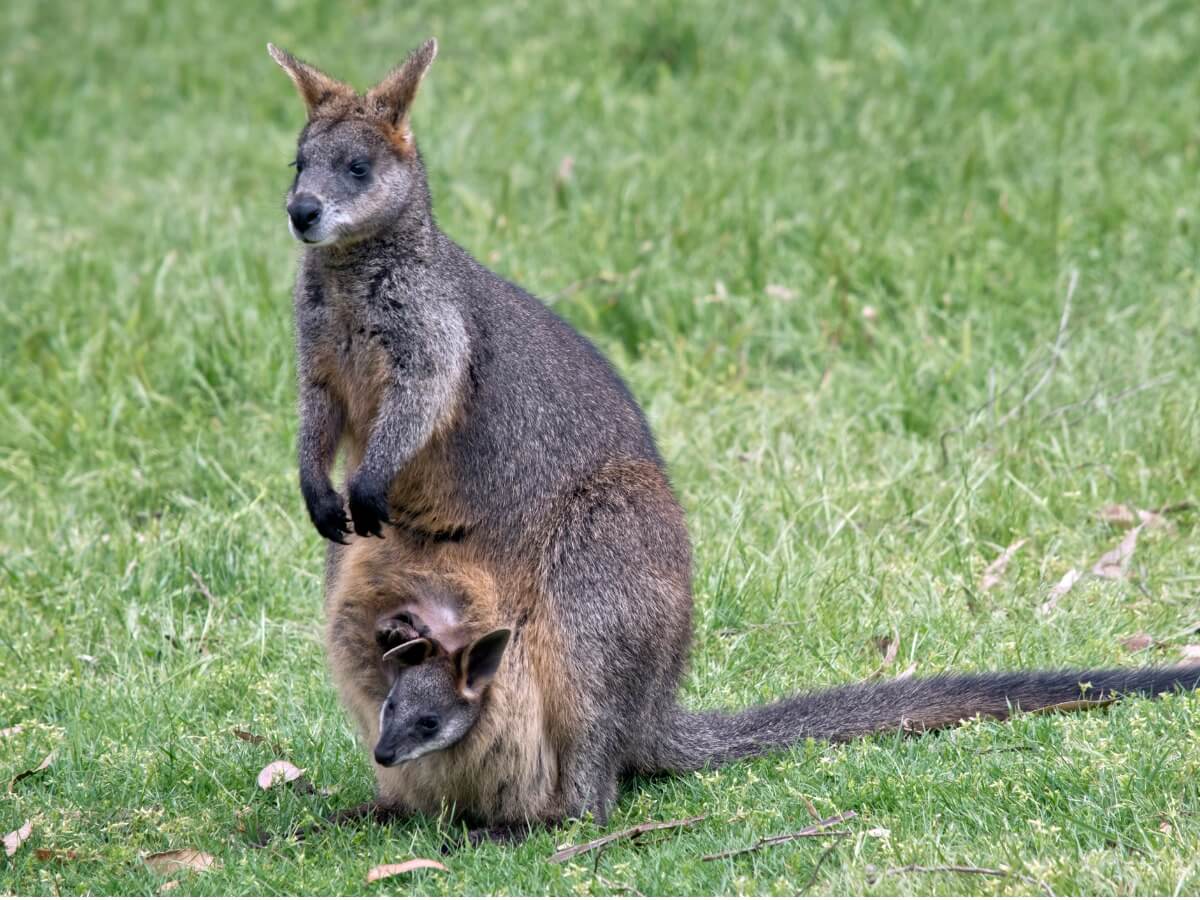
Red kangaroo (Macropus rufus)
Considered the largest of today’s marsupials, its weight reaches 90 kilograms (200 pounds) and its height is 1.50 meters (5 feet). Their diet consists of grass and leaves from trees and shrubs. It’s a gregarious species that are organized in groups of 2 to 10 specimens in the rainy season, but in times of drought, it can reach 1,500 individuals.
These marsupials can jump 10 meters.
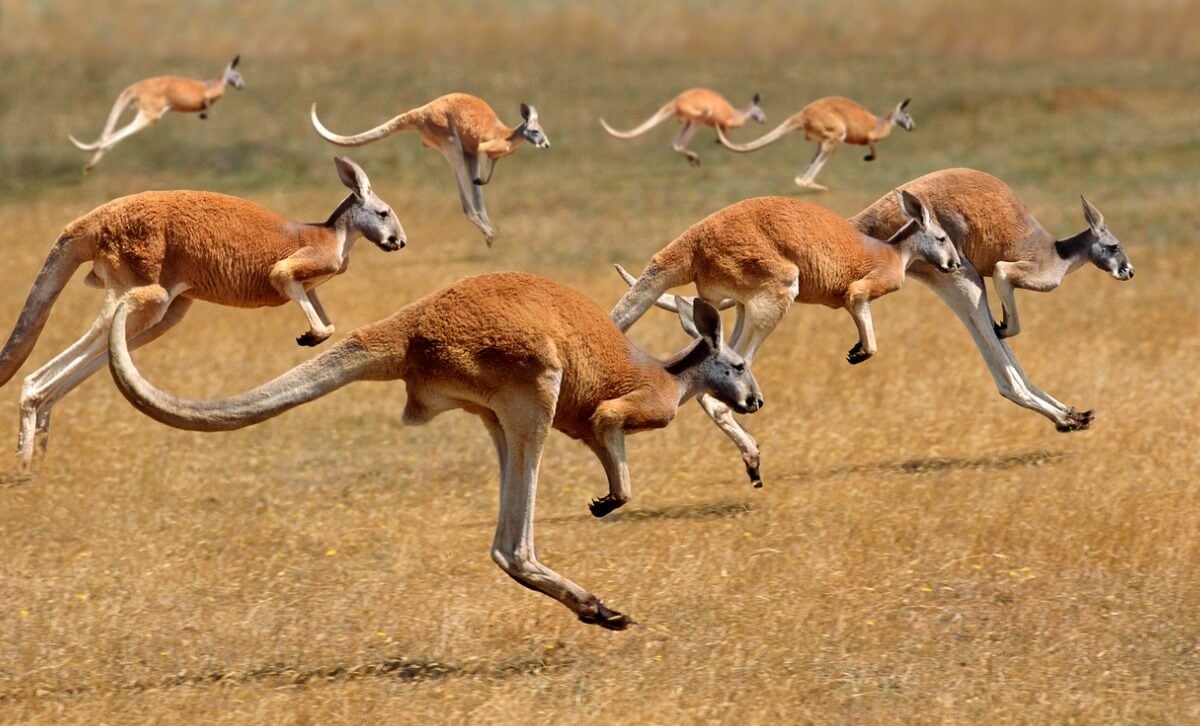
Are you familiar with all these types of marsupials? Especially in Australia, where there are so many endemic species, their conservation becomes essential to ensure the biodiversity of their habitats. As always, the first step to protecting them is to get to know them a little better.
The head of a small kangaroo poking out of its mother’s pouch is a familiar image, but what’s behind it? What are the advantages of carrying the baby in a pouch? And how many types of marsupials are there?
Today we have the answers to these and more questions and you’ll be able to get to know different types of marsupials. Although it’s genetically older, this form of reproduction has points in its favor that have allowed many species to survive over the centuries.
Characteristics of marsupials
Marsupials are non-placental viviparous mammals. This means that the placenta, which protects the fetus, nourishes it and protects it from the mother’s immune system, doesn’t exist in these animals during pregnancy. Instead, they have a pouch, a bag of skin in the mother’s womb.
Female marsupials have 3 vaginas. The 2 lateral ones are destined for fertilization and the central one is where the young are born.
This means that the young are born very premature and climb up to the breasts through a path of saliva that the mother creates before birth. They’ll spend much of their development hooked to the mother’s nipples, as they’re in a fetal state.
The life of the offspring is at risk from birth due to this premature delivery, but, in this way, the mother avoids having to survive with an advanced pregnancy and having a problematic delivery. In fact, pregnancies rarely exceed a month.
Marsupial taxonomy
There are about 270 species of marsupials, 70 in America and about 200 in Australia. Phylogenetic studies suggest that marsupials managed to get from South America to Australia via Antarctica when Pangea still existed.
The mammalia class encompasses the marsupialia, to which the animals in question belong. Within this infraclass, the following orders can be found:
- Order Didelphimorph. This order groups the majority of American marsupials, such as the opossum. Many of them are considered living fossils.
- Order Paucituberculata. Also American, it only has living members in the Caenolestidae family, as the rest of the species are long extinct.
- Order Microbiotheria. The only member of this order is the mountain monkey (Dromiciops gliroides), which lives in the American Neotropics despite being more related to Australian marsupials.
- Dasyuromorphia Order. This order is endemic to the Australian continent. Most of its members are terrestrial and carnivorous, such as the Tasmanian devil (Sarcophilus harrisii).
- Order Peramelemorphia. Characterized by their thin legs and elongated snout, this order is made up of the bandicoots (Peramelidae) and the bilbies (Macrotis).
- Order Notoryctemorphia. The members of this order bear an incredible resemblance to placental moles, even though they’re genetically distant species.
- Diprotodontia order. Marsupials with two incisors in the jaw belong to this group. Here you can find the kangaroo, koala, or glider, well known in general culture.
Types of American marsupials
Phylogenetically older, American marsupials are less well known, although no less interesting for that. If you want to get to know them better, here are a few examples.
Water opossum (Chironectes minimus )
This is the only known aquatic marsupial. Its habitat is found in the lakes and streams of Mexico and its populations are distributed to the northeast of Argentina. It feeds on river crustaceans, amphibians, and fish. It can grow to about 75 centimeters (30 inches) from head to tail.
Four-eyed opossum (Philander opossum)
It lives in southern Mexico, although it’s also found in South America. It’s an omnivore, arboreal, and a terrestrial species of nocturnal habits. The opossum family is also known as “opossums” in its broadest sense.

Colombian chuchita (Gracilinanus perijae)
Also known as the mouse opossum of Colombia, this species is endemic to the country that gives it its name. It’s a tiny animal that lives in tropical and subtropical lowland forests.
North American opossum (Didelphis virginiana)
This is perhaps the best-known representative, as the opportunistic eating habits of this opossum allowed it to spread to North America. It’s common to see specimens entering the cities and the courtyards of the houses.

Colombian tunato (Caenolestes fuliginosus)
Endemic to the south of Valdivia (Antioquia), this small marsupial is nocturnal and omnivorous. It’s critically endangered by agriculture that destroys its habitat.
Sheep weasel (Didelphis albiventris)
The sheep weasel or black weasel is typical of Argentina, Bolivia, Brazil, Uruguay and Paraguay. Despite the nickname “weasel”, it isn’t a mustelid – it’s a marsupial. It has a very short life cycle, as it barely reaches 4 years of age. It’s an omnivorous species that feeds on insects, rodents, amphibians, reptiles, and fruits.

Types of Australian marsupials
This continent is where the greatest number of these animals are found: of the 378 land mammals registered there, 200 are marsupials. Australian marsupials are characterized by the great adaptive variability of their species, as you can see with the following examples.
Giant kangaroo (Macropus giganteus)
The giant kangaroo or eastern gray kangaroo can weigh more than 60 kilos (130 pounds) and reach 2 meters (6.6 feet) in height. Its powerful hind legs allow it to reach 55 kilometers/hour (just over 30 mph) in very fast sprints. It lives in the south and east of Australia and Tasmania.

Common wombat (Vombatus ursinus)
This is the only species of its genus and is characterized by its herbivorous diet and opportunistic behavior. Although prohibited these days, its adorable looks caused this marsupial to be exploited as a domestic animal in the past. Their metabolism is extraordinarily slow and they tend to move calmly, although when in danger they can put a spring to their step!

Swamp wallaby (Wallabia bicolor )
This genus differs from that of kangaroos, although their appearance is very similar. The female of this species harbors a particularity: she has 2 uteri, which allows her to start a new gestation period while still carrying a baby in her womb, that is, she could have one pregnancy at the same time as another.

Red kangaroo (Macropus rufus)
Considered the largest of today’s marsupials, its weight reaches 90 kilograms (200 pounds) and its height is 1.50 meters (5 feet). Their diet consists of grass and leaves from trees and shrubs. It’s a gregarious species that are organized in groups of 2 to 10 specimens in the rainy season, but in times of drought, it can reach 1,500 individuals.
These marsupials can jump 10 meters.

Are you familiar with all these types of marsupials? Especially in Australia, where there are so many endemic species, their conservation becomes essential to ensure the biodiversity of their habitats. As always, the first step to protecting them is to get to know them a little better.
All cited sources were thoroughly reviewed by our team to ensure their quality, reliability, currency, and validity. The bibliography of this article was considered reliable and of academic or scientific accuracy.
- Vombat comun | Animalandia. (2021). Educa Madrid. https://animalandia.educa.madrid.org/ficha.php?id=2397
- Martin, G.M. 2016. Caenolestes fuliginosus. The IUCN Red List of Threatened Species 2016: e.T41506A22179949. https://dx.doi.org/10.2305/IUCN.UK.2016-2.RLTS.T41506A22179949.en. Downloaded on 28 June 2021.
-
Unique reproductive strategy in the swamp wallaby. Brandon R. Menzies, Thomas B. Hildebrandt, Marilyn B. RenfreeProceedings of the National Academy of Sciences Mar 2020, 117 (11) 5938-5942; DOI: 10.1073/pnas.1922678117
- EcuRed. (2021). Marsupiales – EcuRed. https://www.ecured.cu/Marsupiales
This text is provided for informational purposes only and does not replace consultation with a professional. If in doubt, consult your specialist.








